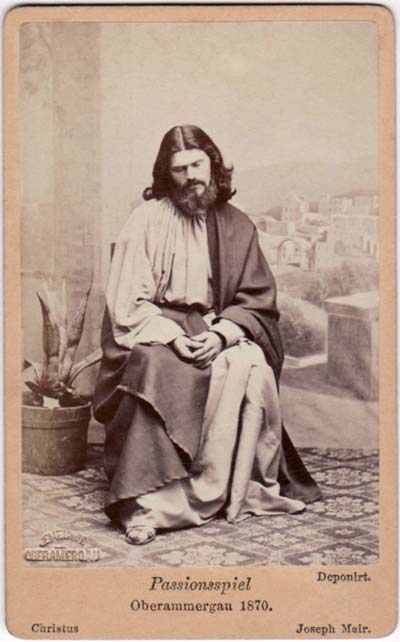
Bach: Matthew Passion, introductory choir and choral. Wiener Singverein, Herbert Karajan (1972)
Kommt, ihr Töchter, helft mir klagen, Sehet – Wen? – den Bräutigam. Seht ihn – Wie? – als wie ein Lamm. Sehet – Was? – seht die Geduld, Seht – Wohin? – auf unsre Schuld; Sehet ihn aus Lieb und Huld Holz zum Kreuze selber tragen. O Lamm Gottes unschuldig Am Stamm des Kreuzes geschlachtet, Allzeit erfund’n geduldig, Wiewohl du warest verachtet. All Sünd hast du getragen, Sonst müßten wir verzagen. Erbarm dich unser, o Jesu! | Come ye daughters, share my mourning: See Him! – Whom? – The Bridegroom. See Him! – How? – A spotless Lamb. See it! – What? – His patient love. Look! – Look where? – On our guilt. Look on Him. For love of us He Himself His Cross is bearing. O Lamb of God unspotted, There slaughtered on the cross, Serene and ever patient, Though scorned and cruelly tortured. All sin for our sake bearing, Else would we die despairing. Have pity on us, o Jesus. |
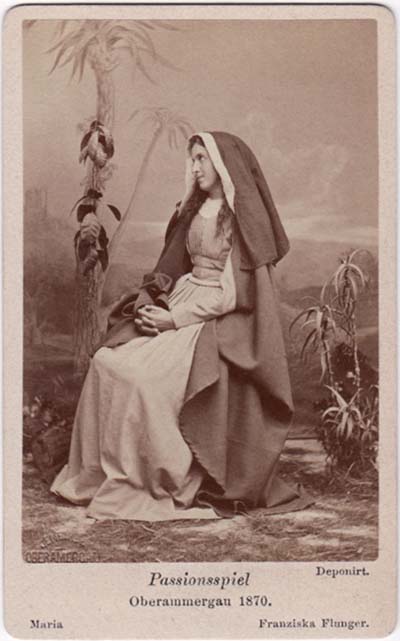
The inhabitants of Oberammergau in Bavaria in 1633 made a pledge: if they survive the plague, then every ten years on Good Friday they hold a passion play involving the whole town. The pledge is still maintained. Last year, in 2010 the passion was performed by two thousand inhabitants of the town before nearly six hundred thousand spectators.
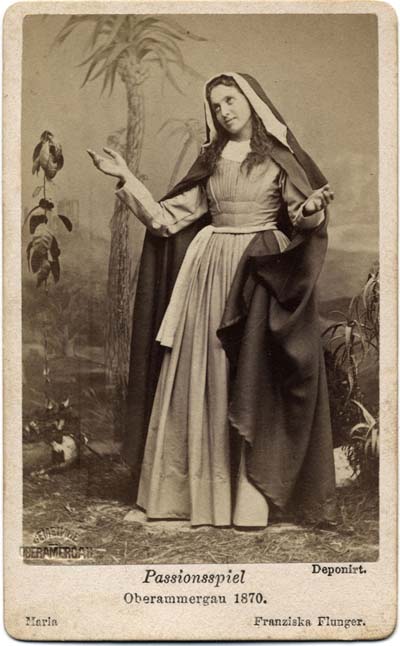
Already in the Baroque era they made etchings and holy images of the spectacles so the visitors had something to take home as a souvenir. And after the appearance of photography also photo reproductions were made for the same purpose, for the first time of the performance of 1870 – in style, in the then most popular format, as visiting cards of the holy personalities.
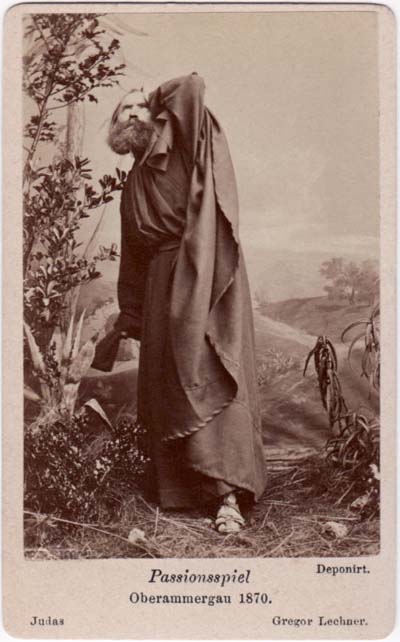

These photos, taken between 1870 and 1950 were published by one-way back in November last year, and then I stored them away in order to publish them today, after the Passion.
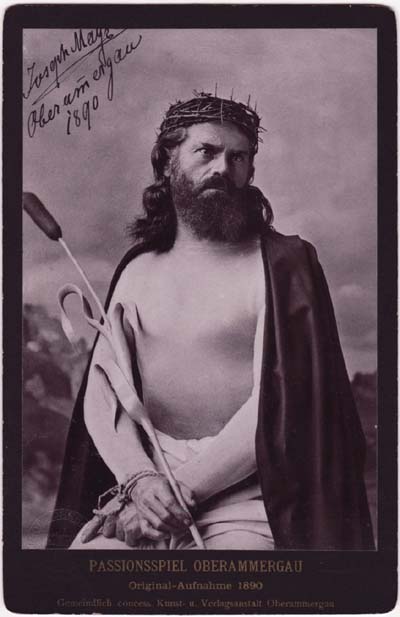
In 1890 the persons were taken on cabinet format photos, just like later in 1900 (below).
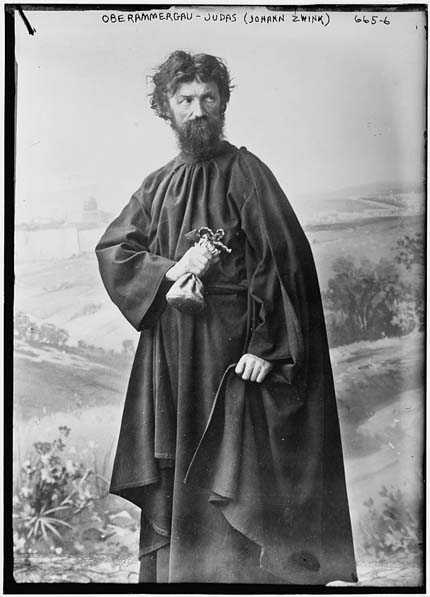
It is interesting to observe the scenic change. While the 1870 performance had an Orientalizing Holy Land background, characteristic of the period, at the turn of the century they seem to set on stage early Renaissance Italian paintings, again in accordance with the taste of the age.
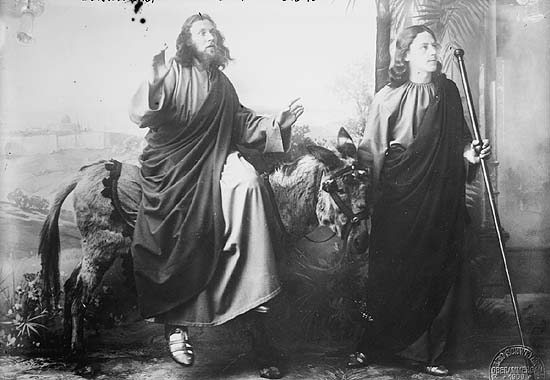

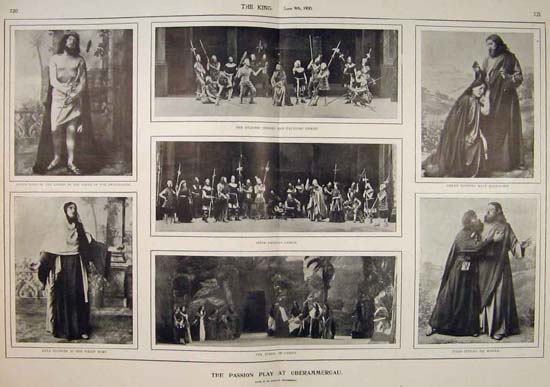
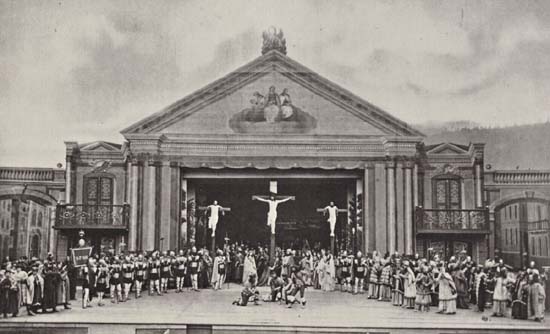
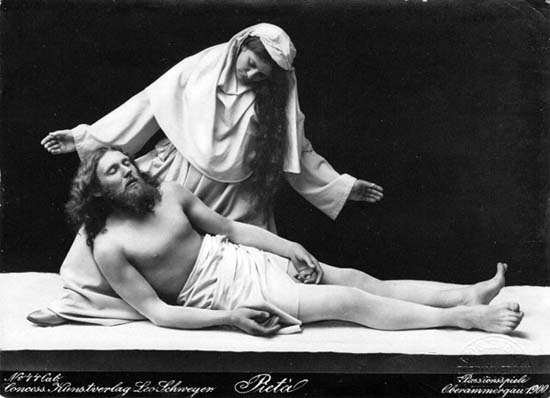

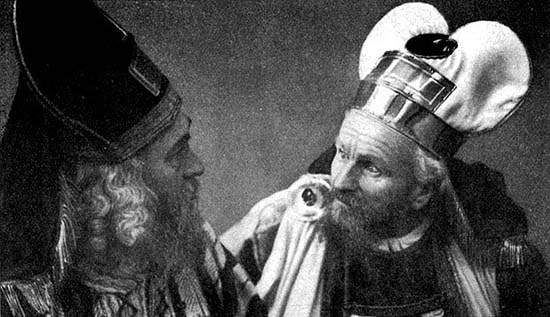
In 1910 the mise-en-scène leans much more towards the costume theater of the period.

Ad in 1950 towards the Hollywood films, both in the scenery and the setting, and even in the facial expressions. Or was it just the photographer of LIFE who saw and recorded the presentation with American eyes?
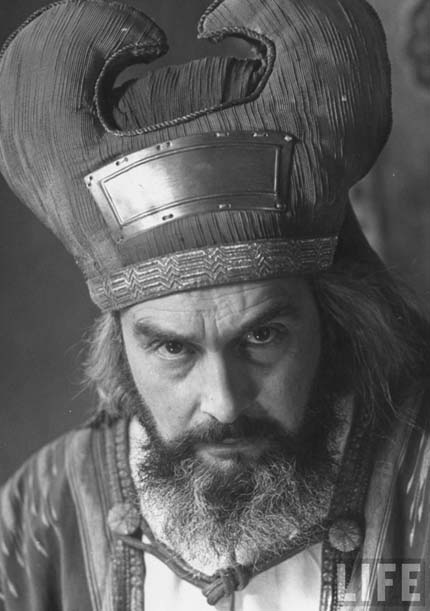
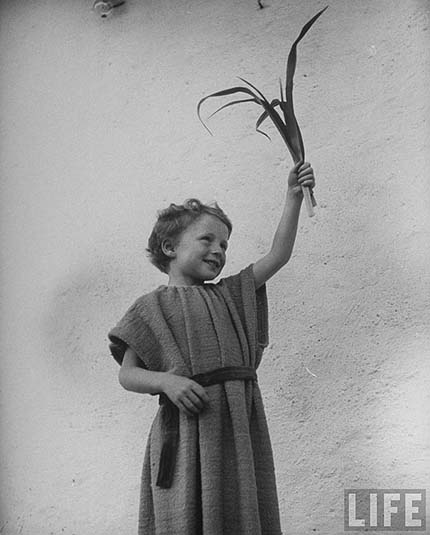

Last year, on the chamber exhibition of the renowned Hungarian photographer Károly Escher in the National Library there was a great series from the 1940s on the passion play performed in a similar way by the German inhabitants of the town of Budaörs/Wudersch in the neighborhood of Budapest. Its most beautiful piece was where the actors in Jewish and Roman costumes were eating ice cream together with the audience. I also wanted to publish them today as a parallel, and I asked the organizers to provide me with some scanned copies, but they have not yet arrived. No problem, at least there will be something to publish next year after the Passion.
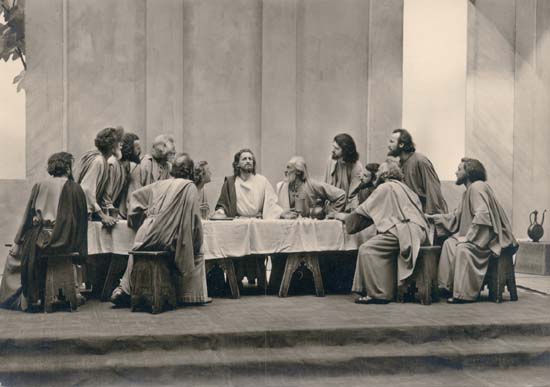
In the meantime you can also have a look at the Passió d’Esparraguera, the Processó de Verges, the Passió d’Olesa de Montserrat, the Passió de Cervera, or the Passió d’Ulldecona, just to remain within the borders of Catalonia.
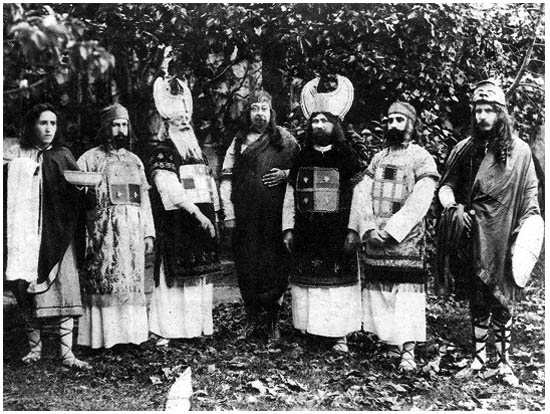 Characters in the Passió d’Esparraguera, in 1906
Characters in the Passió d’Esparraguera, in 1906
























































No hay comentarios:
Publicar un comentario